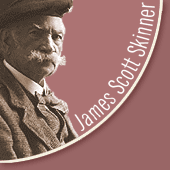




Please click any thumbnail image to view the full details.
There are 900 entries.
prev 10 | 48 > 49 > 50 > 51 > 52 > 53 > 54 > 55 > 56 > 57 | next 10 of 90 pages
| Image | Title | Item Description |
|---|---|---|
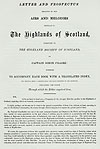 JSS0533 |
Page 1 of 3, Letter and Prospectus relative to the Airs and Melodies peculiar to The Highlands of Scotland | In 1815 Simon Fraser of Knockie (1773-1852) had applied to the Highland Society of Scotland (now the Royal Highland and Agricultural Society, Ingliston, near Edinburgh) for funding towards his publishing project. This document would have been circulated by booksellers to potential subscribers and other purchasers. |
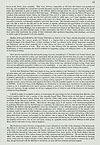 JSS0534 |
Page 2 of 3, Letter and Prospectus relative to the Airs and Melodies peculiar to The Highlands of Scotland | In 1815 Simon Fraser of Knockie (1773-1852) had applied to the Highland Society of Scotland (now the Royal Highland and Agricultural Society, Ingliston, near Edinburgh) for funding towards his publishing project. This document would have been circulated by booksellers to potential subscribers and other purchasers. |
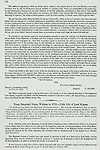 JSS0535 |
Page 3 of 3, Letter and Prospectus relative to the Airs and Melodies peculiar to The Highlands of Scotland | In 1815 Simon Fraser of Knockie (1773-1852) had applied to the Highland Society of Scotland (now the Royal Highland and Agricultural Society, Ingliston, near Edinburgh) for funding towards his publishing project. This document would have been circulated by booksellers to potential subscribers and other purchasers. |
 JSS0536 |
Lady Lovat | This beautiful melody flows so elegantly. The instruction: 'Slow accented Strathspey Style' should remind the player that this is a solo strathspey and therefore for listening to rather than for dancing to. 'Mac Shimi' (son of Simon) is the name applied to the Fraser of Lovat chief which dates back to the 13th century. The Frasers supported Bonnie Prince Charlie during the Jacobite Rebellion. |
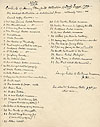 JSS0537 |
Contents, Scotch MS Tunes 1730-1760 | The 'James Christie' manuscript attracted attention from Aberdonian bibliophile William Walker in 1918. Letters from Walker and others interested in the musical Christie family are found elsewhere on this site. This note, which Walker glued to the inside of the manuscript, is a list of tunes from the first published collection of Scottish music, Henry Playford's 'Collection of Scots Tunes. 1700', published in London. |
 JSS0538 |
Provenance note by William Walker, re. Scotch MS Tunes 1730-1760 | Research by Walker and others into the Christie family of Monquhitter, (from JSS0505) included this 'James Christie MS 1730-1760'. Walker begins 'I got this manuscript from Mrs Paterson, Mackie Place sometime about 1873. - Her step-daughter was married to Mr Christie Procurator Fiscal Banff whose father's name is inscribed on one of the old fly-leaves, preserved at end. It was a tradition in the family that the music was written out by old James Christie's grandfather_.' |
 JSS0539 |
Snuff in the Black Mill | Three tunes (melody only) from the 'James Christie MS 1730-1760'. The 'Black Mill' is probably a snuff mill, or mull. A simpler form of 'O'er Bogie', it is one of the oldest North-east tunes known. This could be the earliest known version of the reel 'Mary Gray', which didn't appear in print until after the date in the manuscript's title. |
 JSS0540 |
The Flowers of the Forest | Two tunes (melody only) from the 'James Christie MS 1730-1760'. 'Flow[e]rs of the Forest', here in a decorated version, is associated with the Battle of Flodden Field, 1513, where many Scottish nobles, including King James IV, died. 'The Rog[ue]s March', also found in other manuscripts, is likely to have been a popular theatre song. |
 JSS0541 |
Page 1 of 2, Quadrilles, compered from admired Scotch Airs | Page 1 of manuscript, in James Webster's hand (see JSS0545), of 'Quadrilles Compered [composed, compiled?] from admired Scotch Airs', The dances were imported to Scotland from France around 1815, and became very popular. They used a wide variety of contrasting melodies. Webster has used 'Willie was a Wanton Wag' (key: G, 2/4), 'On a Bank of Flowers' (key F, 2/4) and 'The Deuks dang o'er my Daddie' (key: D, 6/8). |
 JSS0542 |
Page 2 of 2, Quadrilles, compered from admired Scotch Airs | Page 2 of manuscript, in James Webster's hand (see JSS0545), of 'Quadrilles Compered [composed, compiled?] from admired Scotch Airs', The dances were imported to Scotland from France around 1815, and became very popular. They used a wide variety of contrasting melodies. Webster has used 'The White Cockade' with a virtuoso variation (key: G, 2/4), and 'Johnnie Cope' (key: F, 2/4) with a variation. |
prev 10 | 48 > 49 > 50 > 51 > 52 > 53 > 54 > 55 > 56 > 57 | next 10 of 90 pages


Historic Collections · Kings
College · Old Aberdeen · AB24 3SW
Tel:(0)44 1224 274312 · E-mail: scottskinner@abdn.ac.uk
Page design by IT Services Web Team